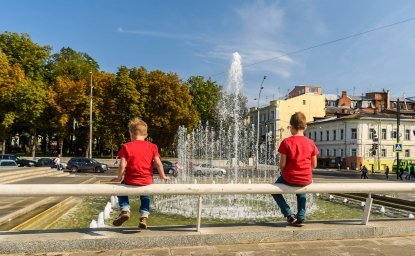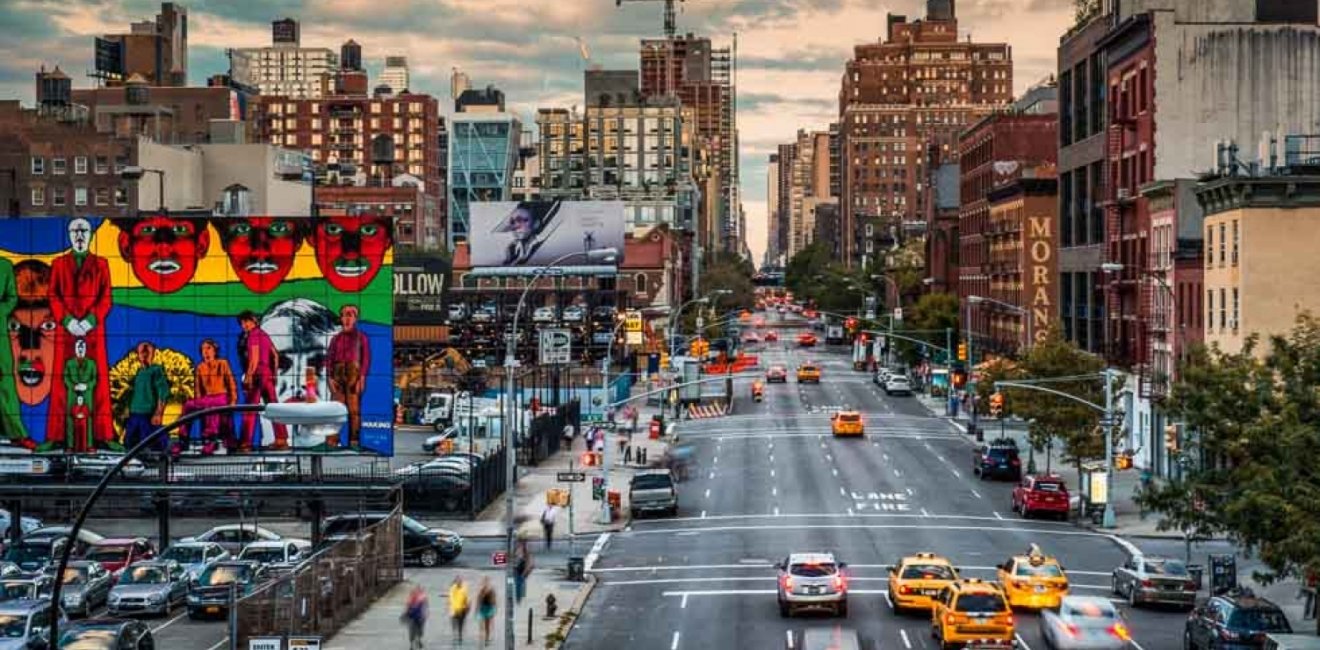“Across history, across regimes of government, if you ever wanted to find the truth, you’d always go to the poet”– Mitchell J. Landrieu, Mayor, City of New Orleans
It was a chilly Tuesday afternoon as people packed the auditorium to hear Vanessa German deliver what had to be among the most captivating performances of the day. A sea of silence filled the audience as she spoke of the children in her community who questioned why she lived in their “bad neighborhood” instead of one with clean streets, safe nights, and no dead bodies to be found in the morning. Her voice echoed throughout the Wilson Center as she called for us to rise and tell our stories so that we may restore ourselves.
Now, if you would have told me two months ago that artists play a major role in the sustainability of our communities, I probably would have ignored that assertion entirely. As a junior pursuing a bachelor’s degree in Political Science I never encountered a single chapter or lesson on arts and culture that spoke to the impact of art on politics. To me, the thought of merging art and policy seemed unrealistic, with connections so imperceptible that it was not worth putting forth an argument. So you can imagine my bewildered reaction when I was asked to help organize a major convening on “Creative Placemaking: The Role of Arts in Community Development” as a part of my internship with the Wilson Center’s Urban Sustainability Lab.
In partnership with the National Endowment for the Arts, the Kresge Foundation, ArtPlace America and Partners for Livable Communities, the December 6 convening gathered artists, community leaders, policy experts, and over 250 attendees to celebrate the launch of the NEA’s publication, How to Do Creative Placemaking. The day included in-depth discussions about creative placemaking and the critical role that arts and culture play in community development and sustainability. It was not until I absorbed this exchange that I realized the notion of art and its place in urban development is not as farfetched a claim as I originally thought. In fact, the arts can be the element policymakers have been seeking to solve issues within urban communities across our country. I came away from the discussion with a new understanding about creative placemaking.
Creativity is a resource
When it comes to addressing our community’s challenges, the power of creativity is often not recognized as a legitimate solution. However, the influence of art and culture is deeply woven in our economic infrastructures. Mayor Mitchell J. Landrieu emphasized how culture and arts have been a critical part of the New Orleans economy. Americans sustaining themselves through arts-related work are creating The Cultural Economy, sharing commonalities in education, transportation, healthcare, etc. This clear linkage of the arts to critical pillars of our society calls for necessary investment and nurturing of arts and culture to produce economically vibrant cities. Mayor Landrieu credits the rebuilding of New Orleans after Hurricane Katrina to creative placemaking. The conceptualization of design and function working together enabled the city to rebuild after the disaster.
Creative Placemaking has been around longer than you think
Although the term “Creative Placemaking” is fairly new, the use of art and culture to benefit communities has been an ongoing practice for centuries. Carlton Turner, Executive Director of Alternate ROOTS, emphasized the longevity of creative placemaking in Mississippi with the Free Southern Theatre. Established in 1963, the theatre’s establishment was not meant to produce art but was used to valorize social protest. The theatre worked with the Student Nonviolent Coordinating Committee organizing African American communities in Mississippi to exercise their right to vote. These moments in history illustrate the existence and effectiveness of creative placemaking, long before there was a word for it.
Artists need to incorporate themselves into the system
Just as policymakers and community leaders must appreciate the impact that art and culture can have on community development, artists need to recognize their importance in community systems, and demand a seat at the table. As Jinho “The Piper” Ferreira, an Oakland, CA-based rapper, actor and sheriff’s deputy pointed out, “These systems are a desert for creativity – they are starving for creativity, and you have people in these systems that want to change and want to do new and inventive things but don’t have a clue what to do next.” This is where the artists come in. In order for art and culture to be taken seriously, artists must understand the inner workings of economic and governance systems. Once they do this, they will be a driving force for necessary funding and investment in art and culture programs, at the same time establishing a regular presence in community decision making and city planning.
Walla D Elshekh was a staff intern with the Urban Sustainability Laboratory during the Fall 2016 semester and is pursuing a Bachelor’s degree in Political Science at Seton Hall University. Walla has also interned at the Center for International Private Enterprise (CIPE) where in addition to conducting research on improving funding tools for business associations, she critiqued program proposals and interviewed program officers around the world, sparking her interest in international development.
As a Sudanese-American Muslim, Walla remains dedicated to promoting diversity and inclusion as well as bridging cultural and religious gaps within communities. Her involvement in various non-profit organizations has fueled her passion for community organizing and development. Walla aims to pursue a JD degree in international human rights law and hopes to continue working to empower youth, women and minority communities.
Author

Urban Sustainability Laboratory
Since 1991, the Urban Sustainability Laboratory has advanced solutions to urban challenges—such as poverty, exclusion, insecurity, and environmental degradation—by promoting evidence-based research to support sustainable, equitable and peaceful cities. Read more

Explore More
Browse Insights & Analysis
Talking to the Dead to Heal the Living

Mustached Bards: Revisiting Soviet Ukrainian Pop Music

Creating Rules of the Game for Contemporary Ukrainian Theater

